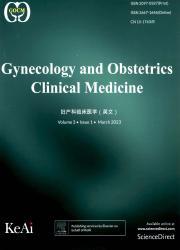Advancements in research on transcutaneous electrical acupoint stimulation for alleviating pelvic pain in women
Q4 Medicine
引用次数: 0
Abstract
Pelvic pain is a common complaint of discomfort in women, with an increasing incidence and seriously affecting patients’ quality of life. Its etiology involves multiple systems and disciplines, and therefore treatment modalities are diverse. Transcutaneous electrical acupoint stimulation (TEAS) therapy is a classic analgesic means, and electrical stimulation of local acupoints can achieve obvious analgesic effects. This review aims to discuss the application of TEAS for the treatment of various types of pelvic pain, the selection of optimal parameters and the renewal of equipment.TEAS for treatment of pelvic pain in women has been reported mainly for endometriosis, pelvic inflammatory disease (PID), intrauterine adhesion (IUA), pelvic stasis syndrome, interstitial cystitis, primary dysmenorrhoea and other diseases. And for parameter selection, the most used of frequency is dilatational wave, the most used stimulation intensity is 10–20 mA, and the acupoint selection should be based on the specific conditions of the patient.The analgesic mechanism of TEAS has not been fully elucidated, but the efficacy of the treatment is remarkable and there are no significant adverse effects. The selection of the parameters for TEAS and the combination of acupoints for different pains are still the main directions of future research.经皮穴位电刺激缓解妇女盆腔疼痛的研究进展
骨盆疼痛是女性常见的不适症状,发病率越来越高,严重影响患者的生活质量。其病因涉及多个系统和学科,因此治疗方法也多种多样。经皮穴位电刺激疗法(TEAS)是一种经典的镇痛手段,对局部穴位进行电刺激可取得明显的镇痛效果。本综述旨在探讨经皮穴位刺激疗法(TEAS)在治疗各种类型盆腔疼痛中的应用、最佳参数的选择以及设备的更新等问题。据报道,经皮穴位刺激疗法(TEAS)治疗女性盆腔疼痛主要用于子宫内膜异位症、盆腔炎(PID)、宫腔内粘连(IUA)、盆腔淤血综合征、间质性膀胱炎、原发性痛经等疾病。TEAS的镇痛机制尚未完全阐明,但疗效显著,无明显不良反应。TEAS 的参数选择和针对不同疼痛的穴位组合仍是未来研究的主要方向。
本文章由计算机程序翻译,如有差异,请以英文原文为准。
求助全文
约1分钟内获得全文
求助全文
来源期刊

Gynecology and Obstetrics Clinical Medicine
Medicine-Obstetrics and Gynecology
CiteScore
0.70
自引率
0.00%
发文量
35
审稿时长
18 weeks
 求助内容:
求助内容: 应助结果提醒方式:
应助结果提醒方式:


